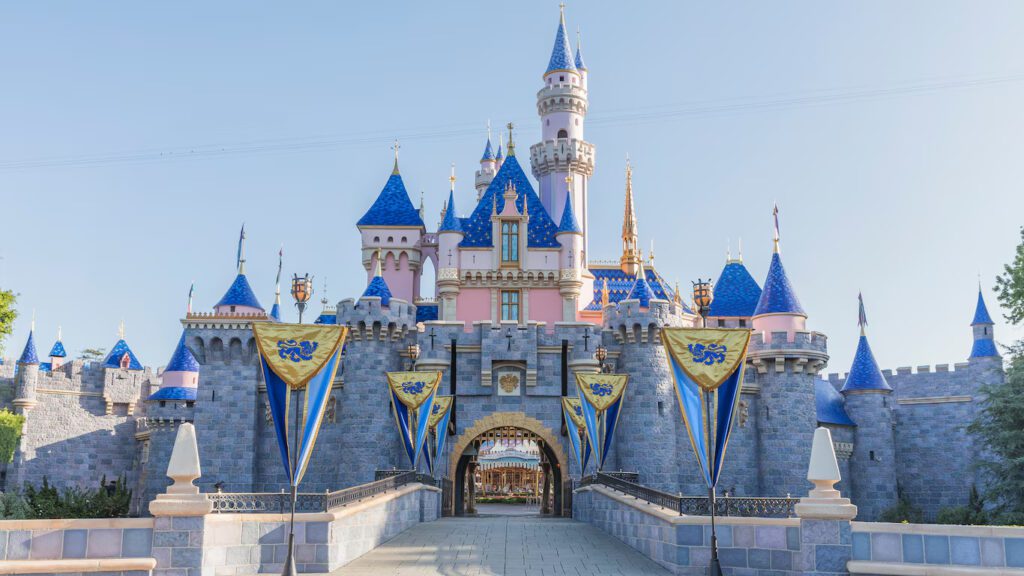Theme parks are more than just places to ride roller coasters — they’re immersive entertainment destinations designed to transport guests into different worlds. Whether you’re exploring a galaxy far, far away at a Disney park or facing off with superheroes at Universal Studios, theme parks blend rides, storytelling, food, and live entertainment into one unforgettable experience.
Unlike traditional amusement parks that focus purely on attractions and games, theme parks follow a central theme or concept across different areas of the park. This can range from fantasy, movies, and history to animals, countries, or even specific characters.

Key Features of a Theme Park
- Themed Lands or Zones: Most theme parks are divided into different areas, each with its own setting, music, and décor.
- Story-Driven Rides: Instead of just spinning or dropping, many attractions include narratives, characters, and multimedia elements.
- Immersive Experiences: From costumed characters to themed dining, the goal is to make visitors feel like they’re in the world of the story.
- Live Shows and Parades: Theme parks often feature musical productions, stunt shows, and nighttime spectaculars.
- Dining and Shopping: Food, snacks, and merchandise are usually tied to the park’s theme, giving visitors a complete experience.
Types of Theme Parks
- Movie and Character-Based Parks
Think Disney, Universal Studios, or Warner Bros. World. These parks are built around franchises and characters, bringing the magic of film and television to life. - Adventure and Animal Parks
Examples include SeaWorld, Busch Gardens, or Disney’s Animal Kingdom, which combine thrill rides with live animals and conservation messages. - Regional Parks
Six Flags and Cedar Fair parks fall into this category — they focus on coasters, water rides, and family fun, often with seasonal events like Fright Fest or WinterFest. - Water Parks
Some theme parks, like LEGOLAND or Six Flags, include massive water parks either attached or within walking distance. Others, like Typhoon Lagoon or Volcano Bay, are standalone. - Cultural and Educational Parks
EPCOT at Walt Disney World is a good example of a theme park that blends learning with fun. It features pavilions from around the world and futuristic rides.
Why Do People Love Theme Parks?
- They’re great for all ages
- They offer an escape from everyday life
- They provide shared family memories
- They combine thrills, entertainment, and food in one place
- They keep evolving with new rides, lands, and shows every year
Theme parks have become a part of pop culture. Visiting Disney World, Universal Studios, or Europa-Park isn’t just a vacation — it’s a bucket list experience for millions.
Theme Parks vs. Amusement Parks
While the terms are sometimes used interchangeably, there’s a key difference:
- Theme parks use storytelling, design, and atmosphere to create immersive worlds (e.g., Disneyland, Universal Studios).
- Amusement parks focus more on rides and games without a central theme (e.g., traditional boardwalk parks or fairgrounds).
Q&A: Theme Park Basics
How many Disney parks are there in the US?
There are six Disney theme parks in the United States — four at Walt Disney World Resort in Florida (Magic Kingdom, EPCOT, Hollywood Studios, Animal Kingdom) and two at Disneyland Resort in California (Disneyland Park and Disney California Adventure).
What’s the difference between a theme park and an amusement park?
Theme parks are designed around a concept or story, often divided into themed zones. An amusement park focuses more on rides and doesn’t necessarily follow a unified theme.
Are water parks considered theme parks?
Some are. If the water park has immersive theming, characters, and storytelling (like Disney’s Typhoon Lagoon or Volcano Bay), it qualifies as a theme park. Others are simply recreational water attractions.
What is the biggest theme park in the world?
Walt Disney World Resort in Florida is the largest theme park complex in the world. It spans over 25,000 acres and includes four parks, two water parks, hotels, and shopping districts.
Are theme parks open year-round?
It depends on the location. Parks in warmer climates (like Florida or California) often operate year-round. Others, especially in northern regions, run seasonally from spring to fall, with winter events extending the calendar.
Final Thoughts
Theme parks offer something for everyone — from jaw-dropping roller coasters to whimsical shows and magical lands. Whether you’re in it for the thrills or the storytelling, theme parks continue to grow, evolve, and inspire new generations of adventurers.
